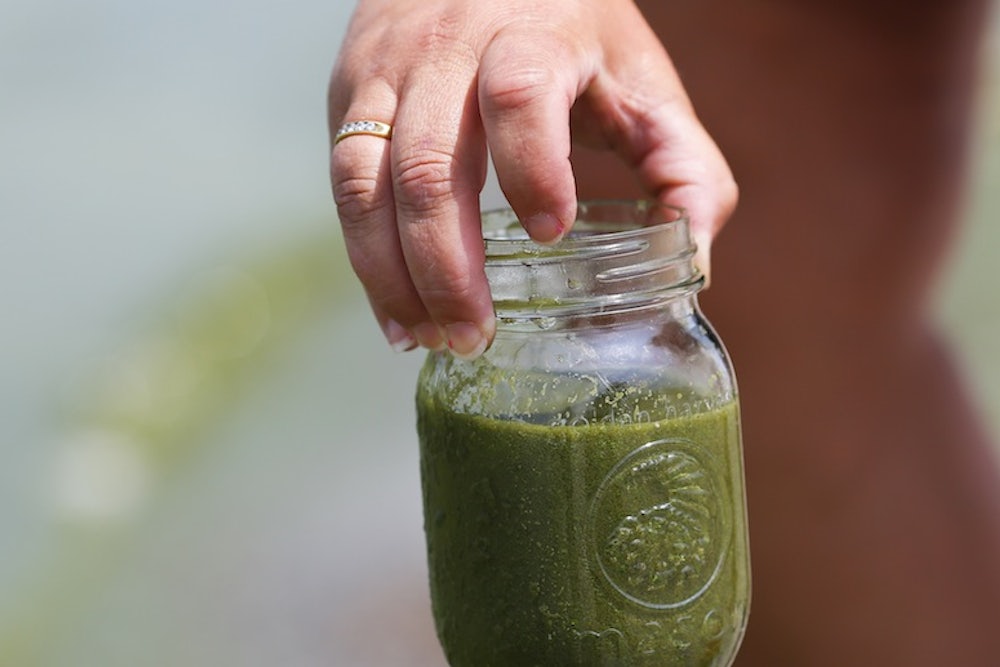Officials lifted the tap-water ban in Toledo, Ohio, on Monday, as it entered its third day. As Mayor Michael Collins declared Monday morning, “Our water is safe.” For now, anyway. But the toxin that contaminated the city’s water supply could be on the rise due to climate change and other human activities. Toledo’s crisis shows just how unprepared cities and towns are for a problem that’s getting worse.
The toxin that contaminated Toledo's water is called microcystin. It comes from cyanobacteria, known as blue-green algae—the green stuff found on the surface of water—which thrive in warm, sunny weather and feed off of phosphorous and nitrogen. Drinking and bathing in it can cause nausea, vomiting, and dizziness within hours, harm the liver, and lead to eye, skin, and throat irritation. Once microcystin is in the water, it can last there for weeks or months.
Officials have been watching microcystin in the Great Lakes region for a while now, and warned that this season would be the fourth-worst on record. Normally, algae blooms are spread across the water, but wind and waves caused it to concentrate near the shore in Lake Erie's Maumee Bay, where Toledo gets its water. On Friday, microcystin was detected in the treatment plant's water at 2.5 parts per billion, well above the World Health Organization’s 1 part per billion recommendation. The harmful algae bloom hasn’t even hit its peak month yet: September.
Other cities that get their water from the Great Lakes region are keeping a close eye on algae blooms: Chicago is now re-testing their water samples from Lake Michigan. And the problem is a national one, as harmful algae blooms exist in every coastal state. Ottawa County in Ohio faced a similar situation last year that resulted in a two-day water ban. Advisories not to swim in algae-contaminated lakes are fairly common: People were told to keep away from two Nebraska lakes last month.
Scientists say climate change is causing algae blooms to become a bigger threat. The National Climate Assessment described how in the Great Lakes, “Higher temperatures, increases in precipitation, and lengthened growing seasons favor production of blue-green and toxic algae that can harm fish, water quality, habitats, and aesthetics, and could heighten the impact of invasive species already present.” Human activity, like runoff from phosphorous-heavy agriculture fertilizers, has also created an optimal environment for the blue-green algae, while invasive species haven’t helped matters by eating the algae that’s not harmful.
While factors like wind may be out of officials' control, there's little in the way of regulatory oversight. Testing for microcystin isn’t federally mandated, nor is it required in the state of Ohio. As a result, many towns don’t have emergency response plans in place and vary in how often they test water samples for the toxin.
The Toledo Blade reported that water treatment officials across Ohio have asked the EPA for additional guidance on testing for microcystin. That lack of guidance can result in confusion, even risk to the public's safety: State officials had assured Toledo residents that the water plant had enough sophisticated “safeguards in place to neutralize the toxin and remove it before it can get into the water supply.” The tap-water ban was announced eight days later.
